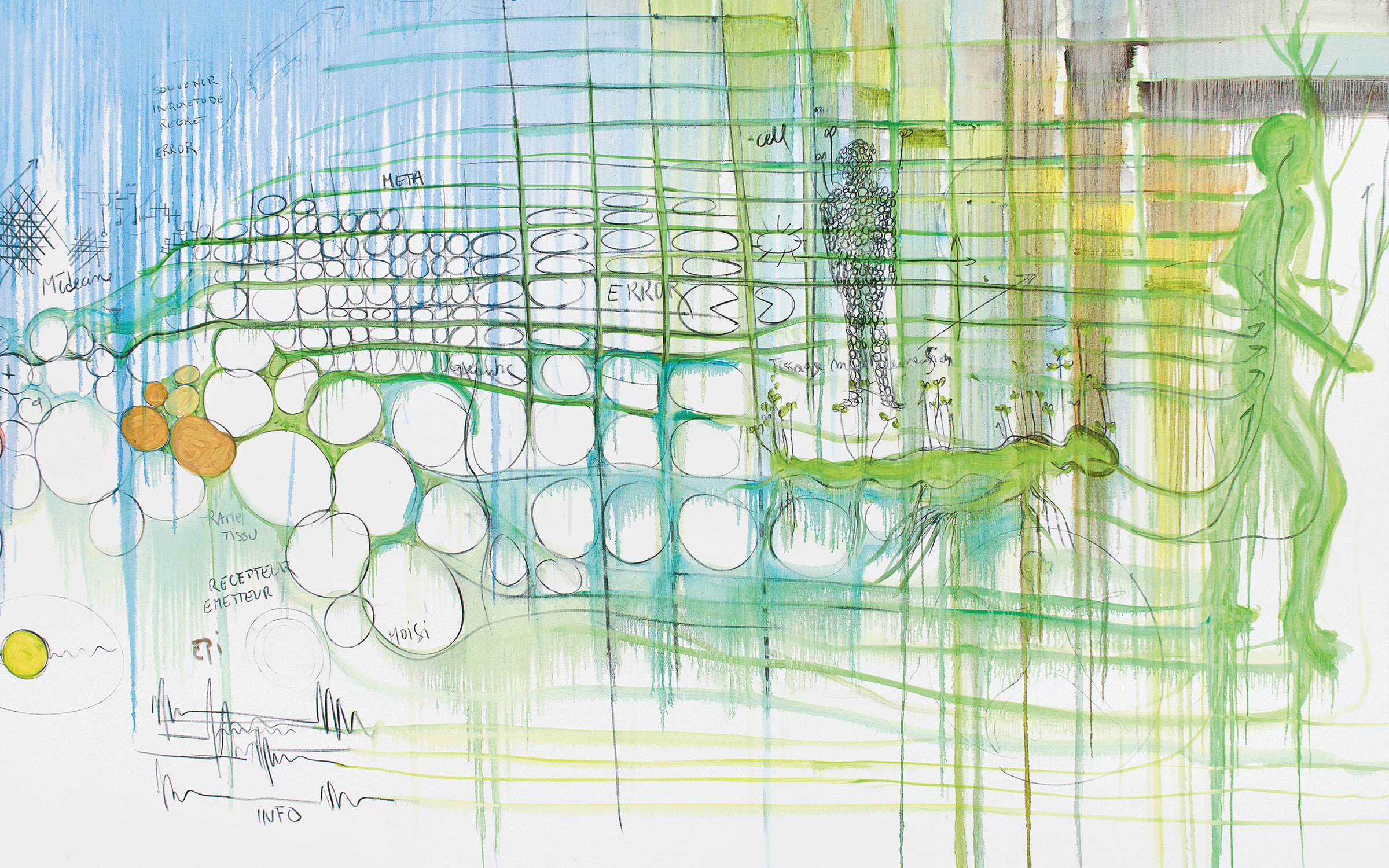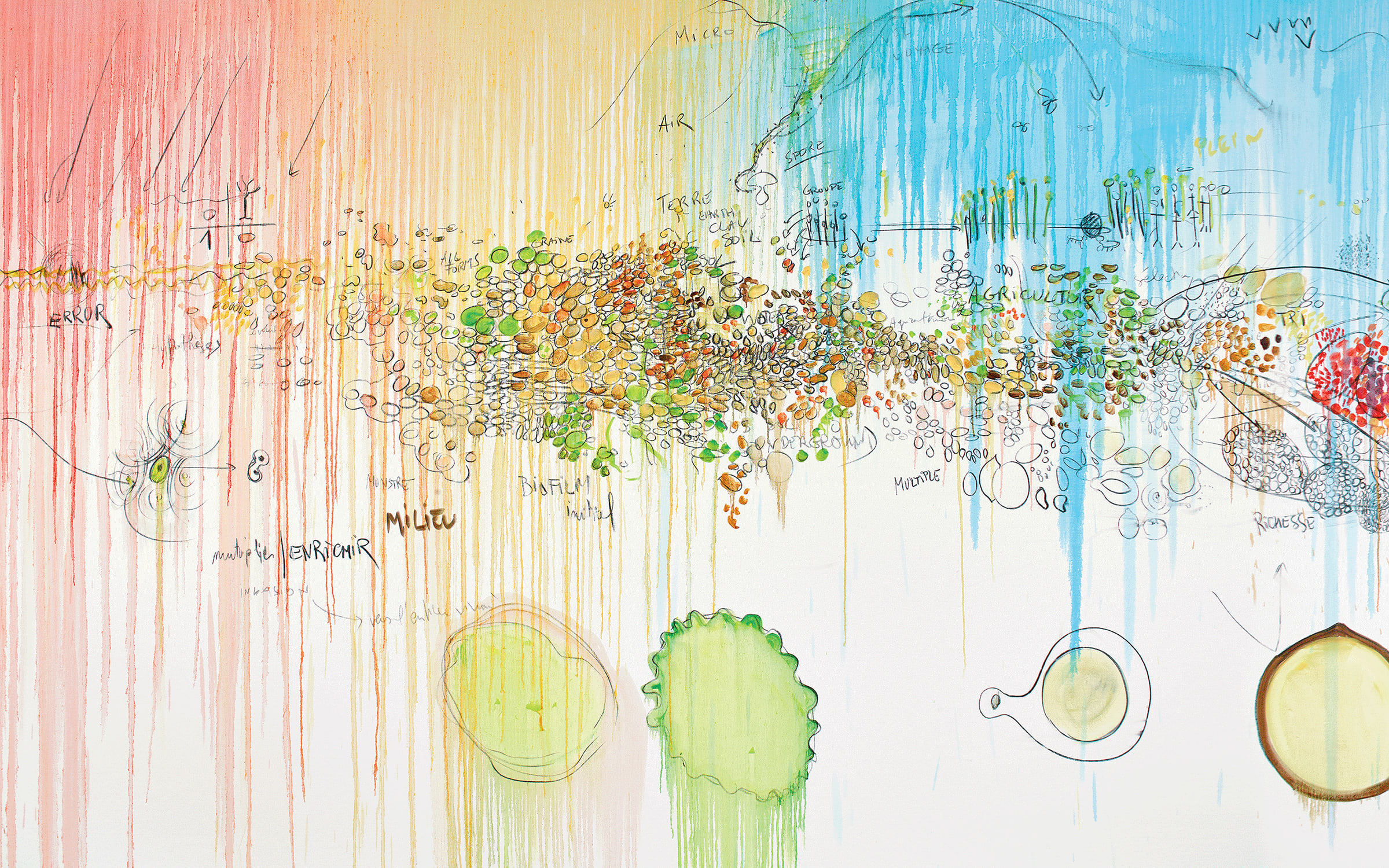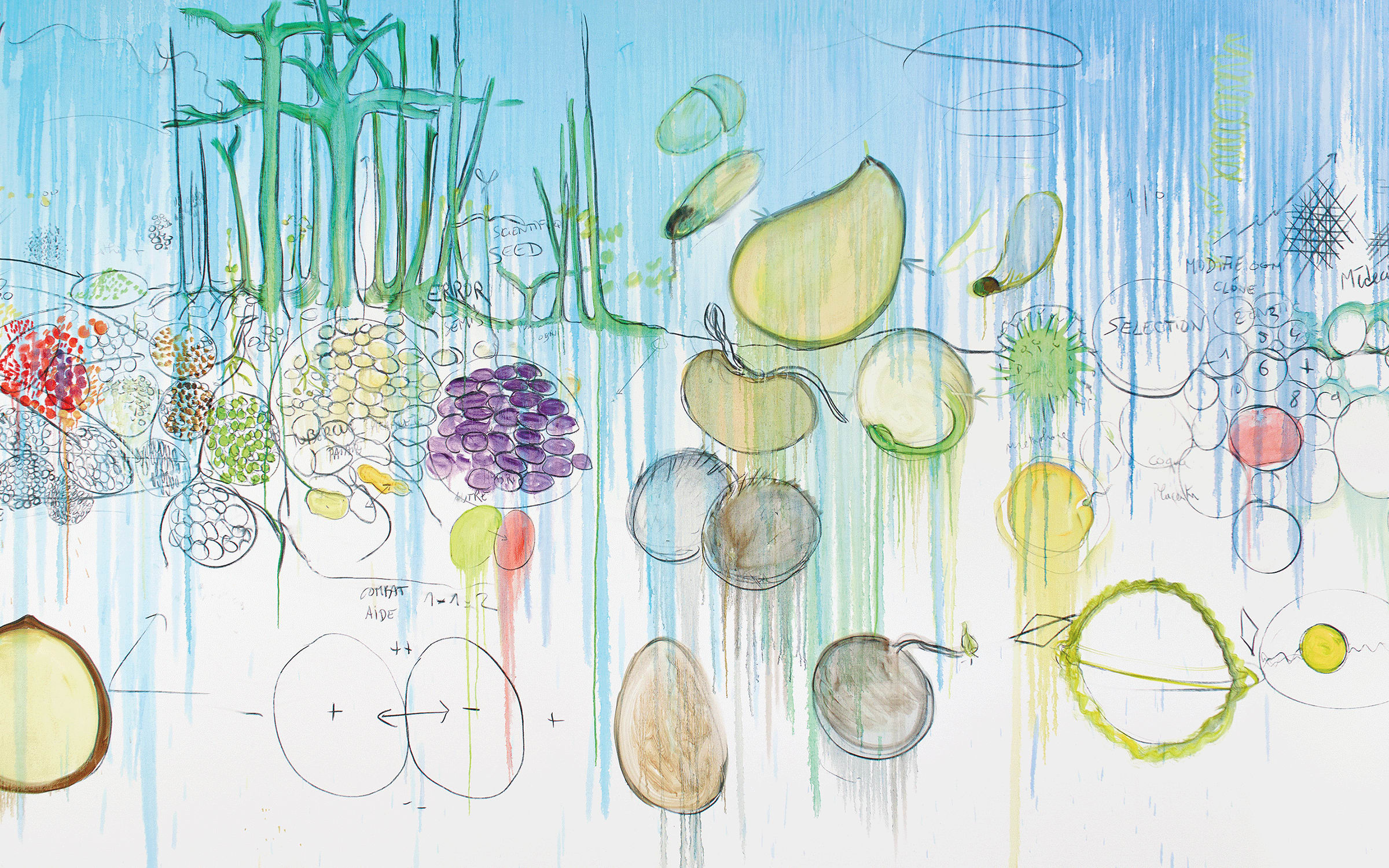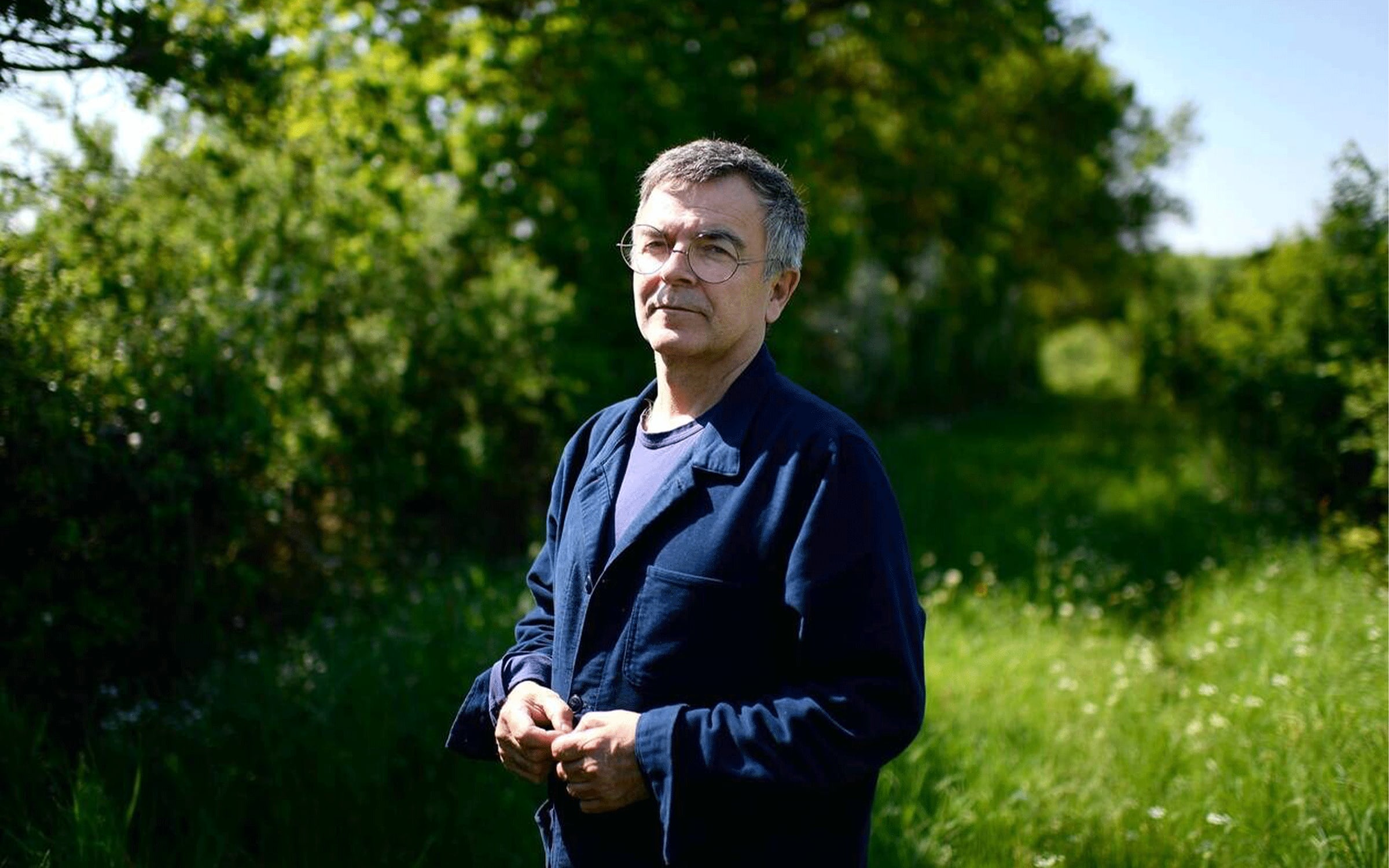As his solo exhibition opened at the Fondation Cartier in Paris, the artist explains his fascination with the evolution of living species.
‘I made Error (2022) this summer, for a group exhibition at the CENTQUATRE-PARIS, focusing on the theme of seeds. As in all my work, I wanted to tell a story: the story of seeds, from their arrival on our planet to how they’ll evolve in the future. I imagined the earth as an amalgamation of fluids that gradually transform, while life appears through bacteria that produce oxygen. The seeds give birth to the plant world and this whole ecosystem creates the human race, which in turn will dissect the world.

‘The green person you can see on the right-hand side of the painting is “L’Homme de Bessines” [“Bessines Man”], who first appeared in my work in 1991. At the time, I was 30 years old and I painted him to look like me, imagining what I would look like at 60. He’s now become my main character. He’s changed over time, taking on different appearances, like the one I gave him in the sculptures I made a few months ago for the Palais Royal fountain, for his 30th birthday. In this painting, he represents humans who come and impose their own structure on the world by breaking it up, thinking they can control it using digital technology, which is represented by the lines crisscrossing the far-right-hand side of the painting. But even in the middle of this cold and methodical setup, organic life manages to break through, because the character’s body ends up fusing with plant life. For this, I was inspired by floor tiles and home bathrooms, where, because of the humidity, you always end up getting mold.

‘Nine metres wide and 2.2 metres high, the painting is like a mural. What I really like about large formats is that it means people can walk the length of the canvas and follow its progress, while remainingon the same scale. As I often do, I coated my canvas with lithopone before painting it with very diluted oil paints. That helps to keep a sort of transparency in the material and in the shapes, like watercolor. For the background, which from left to right follows the colors of the rainbow, I recreated an imagined history of all the sky’s shades, from its red and sulfurous beginnings, through to when oxygen arrived, turning it blue, up until when it becomes dirtier and darker, polluted by what humans have done.


‘Ever since I started working in the 1980s, painting has helped me find answers to the questions that intrigue me – in mathematics, quantum physics, or even epigenetics. In the first few years of my career, I forced myself to draw exactly what I was thinking. My art created totally invented landscapes. But despite that, I still feel like I’ve being doing the same paintings since the beginning. I see all of my paintings as empty whiteboards in a classroom, where you can learn as much by filling them in as you can by showing them to others. That’s why, for my new solo exhibition at Fondation Cartier, I’m planning on transforming the building into a school, where Error will be one of the keys to understanding the natural world. It will be hung in the basement in what I’ve called the “multipurpose room”, next to four vertical paintings representing things mutating. The enormous canvas conveys the idea that life will always prevail. So, if humans want to stay dominant, they have to learn from their mistakes.’

Fabrice Hyber is represented by Galerie Nathalie Obadia (Paris, Brussels).
‘La Vallée’
Until April 30, 2023
Fondation Cartier, Paris
Matthieu Jacquet is a journalist and art critic based in Paris. He writes about art and fashion for Numéro and Numéro art.
English translation: Catherine Bennett.
– Published courtesy of Art Basel


Leave a Reply